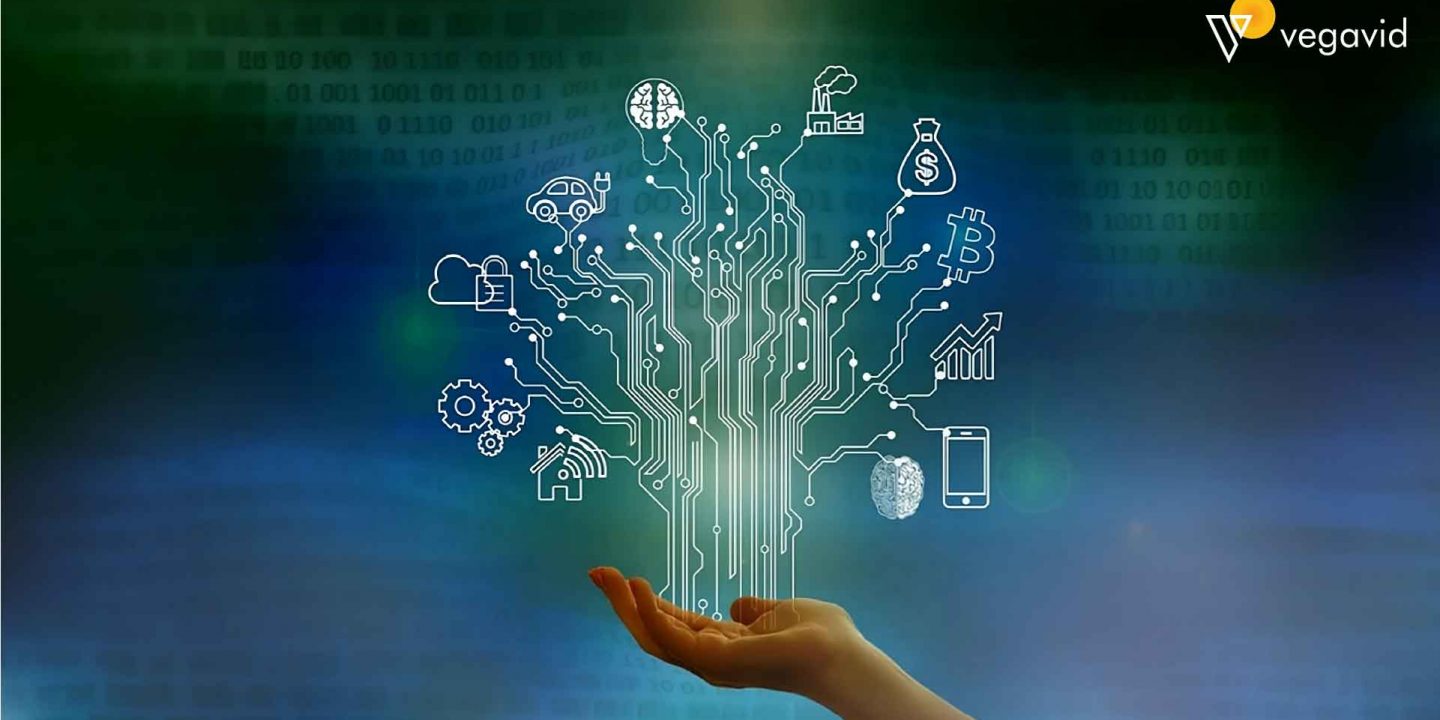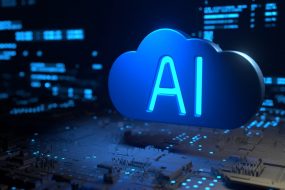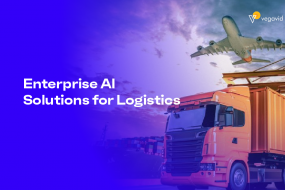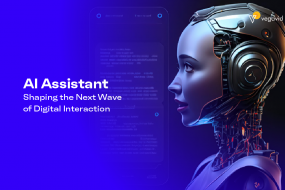
Artificial intelligence and machine learning have the potential to revolutionize the next generation of decentralized applications and services known as Web3. From enhancing user experiences and optimizing processes to generating content and automating certain tasks, AI technologies show immense promise in transforming and scaling Web3 networks. This blog will examine several real-world use cases for how AI is being applied in areas like finance, gaming, content creation, and more to unveil the power of AI in revolutionizing Web3.
Role of AI in transforming Web3
Artificial intelligence and machine learning will play a major role in advancing Web3 technologies and applications. AI has the potential to optimize the speed, efficiency, and capabilities of decentralized networks. AI algorithms may power tasks like automating transactions, screening smart contracts for errors and vulnerabilities, detecting fraud and malicious activity, as well as generating customized content and experiences for users.
In decentralized networks, AI could help manage the enormous amounts of data and transactions required to maintain consensus across nodes. AI systems may be able to scan and analyze transactions faster and more accurately than humans to detect fraudulent activity. Smart contracts could utilize AI to ensure legal and functional compliance before executing transactions. AI tools could analyze the thousands of smart contracts deployed every day to identify flaws and weaknesses.
As Web3 networks expand and become more complex, AI will likely become essential for processing data, screening content, personalizing interactions, and providing customer service functions. AI-generated content, like art, music, articles, and social media posts, is already becoming part of Web3 experiences. AI chatbots and virtual assistants could serve as the primary interface between networks and users. Ultimately, AI may facilitate the move towards a ubiquitous, seamless Web3 experience where humans are supported by intelligent machines.
Definition of AI and its key components
Artificial intelligence relies on several key technologies and components to function. At its core, AI needs large amounts of data to learn from. Data provides the examples and information that AI models use to develop patterns and make predictions.
Machine learning is the process by which AI systems are trained using data. Through machine learning techniques like deep learning, neural networks, and reinforcement learning, AI models learn to perform tasks by analyzing data examples without being explicitly programmed.
Algorithms are mathematical formulas and step-by-step instructions that allow AI systems to process data, identify patterns, and make decisions. The capabilities of today’s AI technology have substantially grown because of algorithmic improvements.
AI systems are now able to comprehend, interpret, and modify human language thanks to natural language processing. AI can engage in meaningful verbal and written communication thanks to technologies like speech recognition and text analysis.
Through the analysis of photos, movies, and other visual data, computer vision enables AI systems to comprehend the visual environment. Applications including facial identification, medical imaging, and autonomous cars have benefited from advances in computer vision.
Together, these core technologies – data, machine learning techniques, algorithms, natural language processing, and computer vision – work together to give AI systems their smart capabilities. Continued improvements to these components will likely drive further development and wider applications of artificial intelligence.
Enhanced User Experience through AI in Web3
Artificial intelligence and machine learning are poised to significantly enhance the user experience in Web3 applications and services. As decentralized networks become more complex and data-driven, AI will play an important role in optimizing how people interact with them.
AI-powered personal assistants and chatbots could act as the primary interface between Web3 networks and users. Intelligent agents could help locate and access relevant information, complete transactions, monitor activity, and troubleshoot issues. These virtual assistants would aim to improve convenience, comprehension, and reliability.
AI-generated content like articles, social media posts, art, and music could enrich the experiences available within Web3 ecosystems. AI systems may be able to automatically generate custom content tailored to individual users. With access to extensive user data, AI could deliver more personalized interactions, products, and services in decentralized applications.
Computer vision and natural language processing will likely underpin much of the immersive experiences that Web3 aims to provide. AI that can perceive and interpret text, images, and speech will be critical for AR, VR, and mixed reality applications within Web3.
AI-Driven Data Governance and Privacy in Web3
There are concerns that the distributed nature of Web3 may make it difficult for users to track how their data is being collected and used. This could enable data abuses and security breaches. Without strong policies in place, AI systems operating within Web3 could collect excessive amounts of personal data without sufficient transparency, control, or security.
However, AI-driven tools may help implement robust data governance and privacy policies within Web3. AI algorithms could help identify and remove sensitive data, detect unauthorized data access, monitor network activity for compliance, alert users about potential privacy risks, and anonymize data to protect individuals.
Through methods like differential privacy and the development of synthetic data, AI may potentially contribute to maintaining user privacy. Real data distributions can be mimicked by synthetic data while preventing person identification. Participants in the Web3 network may have some degree of control over how their data is utilized thanks to these AI privacy solutions.
AI-Enabled Decentralized Finance (DeFi) in Web3
Huge volumes of transaction data may be analyzed by AI algorithms to spot patterns suggestive of fraud, theft, money laundering, and other illicit acts. This can make DeFi users feel more secure by identifying suspicious activity and dangerous actors. AI technologies may continuously monitor DeFi protocols for indications of instability or danger, such as a lack of liquidity, unusual pricing, flash crashes, and weaknesses in smart contracts. Early risk detection can safeguard consumers by preventing systemic crashes.
AI agents may be able to execute transactions autonomously according to parameters set by users. This could allow for automated lending, yield farming, arbitrage, and other decentralized financial activities. AI agents aim to optimize returns while reducing costs and simplifying DeFi usage. AI-powered recommendations and personalization aim to make DeFi more accessible and useful for non-technical users. By analyzing user profiles and behavior, AI systems could suggest suitable decentralized financial products and services.
AI may assist in screening smart contracts for bugs, flaws, and policy violations before deployment. AI tools show promise in identifying potential issues that could lead to hacks or losses for DeFi users. Challenges remain in ensuring the transparency, robustness, fairness, and explainability of AI algorithms operating within open DeFi networks. Issues like data bias, adversarial attacks, and unintended consequences must be mitigated to build trust in AI-powered DeFi.
AI in Web3 Gaming and Virtual Worlds
AI will likely play a vital role in enhancing the complexity, interactivity, and immersion of games built on decentralized networks. AI-generated content like game levels, characters, narratives, and in-game items could create near-infinite variability and replay value for Web3 gaming experiences. AI systems could dynamically adapt game difficulty, pacing, and storyline based on real-time analysis of player behavior and performance. This personalized optimization aims to keep players continually engaged and challenged.
AI agents like non-player characters and companions could exhibit more lifelike intelligence, emotion, and social skills through advances in natural language processing and reinforcement learning. AI assistants in Web3 games may help players navigate complex systems, locate resources, manage in-game economies, and form strategic alliances.
Computer vision and generative AI will also contribute to the photorealistic graphics and virtual worlds sought within Web3 gaming. AI may generate realistic environments, characters, and animations at scale to build out immersive metaverses. AI image-generation tools are showing potential for high-fidelity virtual depictions of people, objects, and scenes.
AI for Web3 Content Creation and Curation
Artificial intelligence will play an important role in powering the vast amounts of content generated within and consumed by Web3 applications and networks. AI tools show significant potential to assist – and in some cases automate – the tasks of content creation, management, and recommendations for users.
AI-based content generation techniques like large language models and generative adversarial networks are already producing text, images, audio, and video at scale for various uses. Within Web3, this AI-generated content could produce tokens, NFTs, blog posts, social media updates, news, and more to populate decentralized applications. Some propose that AI may one day become a fundamental part of Web3’s content creation ecosystem, seamlessly producing content customized for individuals.
AI content curation tools powered by machine learning and natural language processing aim to surface the most relevant content for users from the massive amounts generated across Web3 networks. By analyzing content, user behavior, and social connections, AI systems may effectively filter, rank and recommend content that matches the needs and interests of individuals.
However, issues around the bias, transparency, and reliability of AI-generated and AI-curated content create risks that must be mitigated for Web3. Standards for ethical AI content creation and AI oversight mechanisms may be required to ensure AI-assisted and AI-generated content supports – rather than undermines – user trust within decentralized applications and networks.
Conclusion
In conclusion, while AI shows tremendous potential to power innovation within Web3 networks, it is important to develop these technologies responsibly with a focus on transparency, explainability, oversight, and ethics. As with any transformative technology, both benefits and risks exist – so conscious design, governance frameworks, and multi-stakeholder collaboration will be needed to maximize the positive impact of AI within Web3 while avoiding potential issues. With the right balanced approach, the combination of decentralized networks and intelligent machines may create a more open, equitable, and sustainable Internet economy for all. But vigilance and stewardship are required to realize this vision in a way that truly serves humanity.








